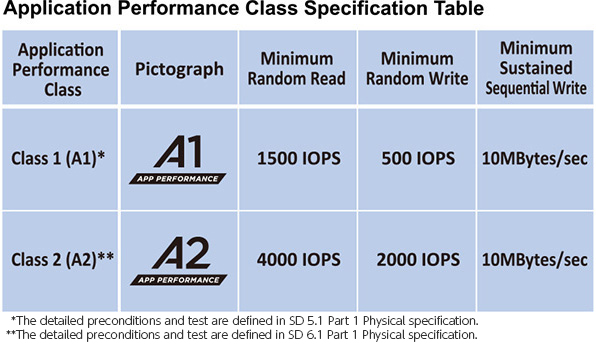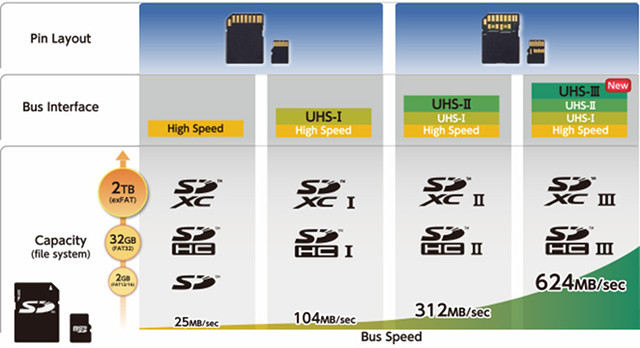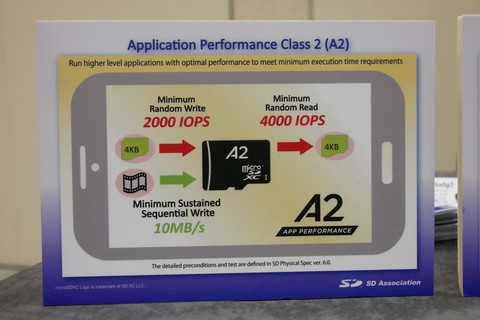Users of development boards booting from (micro) SD cards have often missed random I/O performance information to determine whether the device would performance well to run an operating system, but now that Google has implemented “adoptable storage” to let consumer run app from their micro SD cards, it has become an important differentiating factor for manufacturers, and the SD association announced A1 App performance class with minimum random I/O read/write performance and at least 10MB/s sequential write speed last year. The SD association has now unveiled Class A2 with better I/O performance with minimum requirements of 4000 IOPS for random reads, and 2000 IOPS for random writes, with the same 10 MB/s minimum sequential write speed.
That means the application performance table now looks as shown below. Note that Class A2 is not available right now, and test requirements will be explained in SD 6.1 part 1 physical specification to be released later this year. Compliant (micro) SD cards will be easy to spot with A1 or A2 logo on the card and package. The SD association came to those numbers in collaboration with Google. The main advantage of such cards will be that the app will load faster, and you’ll get less occurrences of “app is not responding” window in Android due to slow I/Os.
Compliant (micro) SD cards will be easy to spot with A1 or A2 logo on the card and package. The SD association came to those numbers in collaboration with Google. The main advantage of such cards will be that the app will load faster, and you’ll get less occurrences of “app is not responding” window in Android due to slow I/Os.
Beside performance requirements, Class A2 also brings some new compulsory features:
- Command Queue
- Contributes mainly to random read performance
- Multiple tasks can be handled at one time with arbitrary order
- New tasks can be assigned during data transmission
- Cache function
- Contributes mainly to random write performance
- Card may use higher speed volatile memory to cache the host data during memory card access operation
- Self-Maintenance
- Contributes to better memory access performance
- Allows internal background data management
- May be initiated either by card or by the host based on the card’s internal needs
SD Specification 6.0 also introduces the Low Voltage Signaling (LVS) memory card that may support either 3.3V or 1.8V signaling with an auto detection mechanism of the host’s operating signaling level. The new specification allows LVS cards to be backwards compatible to conventional 3.3V signaling hosts. Both Class A2 and LV were announced in the same press release.
SD Cards are still being to store large files such as photos and videos, so sequential performance is still important, and that’s why the SD association also announced UHS-III delivering up to 624 MB/second for applications such as 4K/8K video recording and high resolution 360° videos.

UHS-III is defined in SD specification 6.0. We can notice some extra pins for UHS-II and UHS-III cards in the diagram above, so the host system will have to support this extra bus to benefit from the extra performance.
Charbax interviewed the SD association at Mobile World Congress 2017 where they talked about both announcements.
More details can be found in the SD association’s Application Performance Class and Bus Speed pages. You may be interested in a white paper entitled “Mobile Device Innovations: Application Performance Class Expansion and New Low Voltage Signaling for SD Memory Cards” to find out more.
Thanks to Theguyuk for the tip.

Jean-Luc started CNX Software in 2010 as a part-time endeavor, before quitting his job as a software engineering manager, and starting to write daily news, and reviews full time later in 2011.
Support CNX Software! Donate via cryptocurrencies, become a Patron on Patreon, or purchase goods on Amazon or Aliexpress





